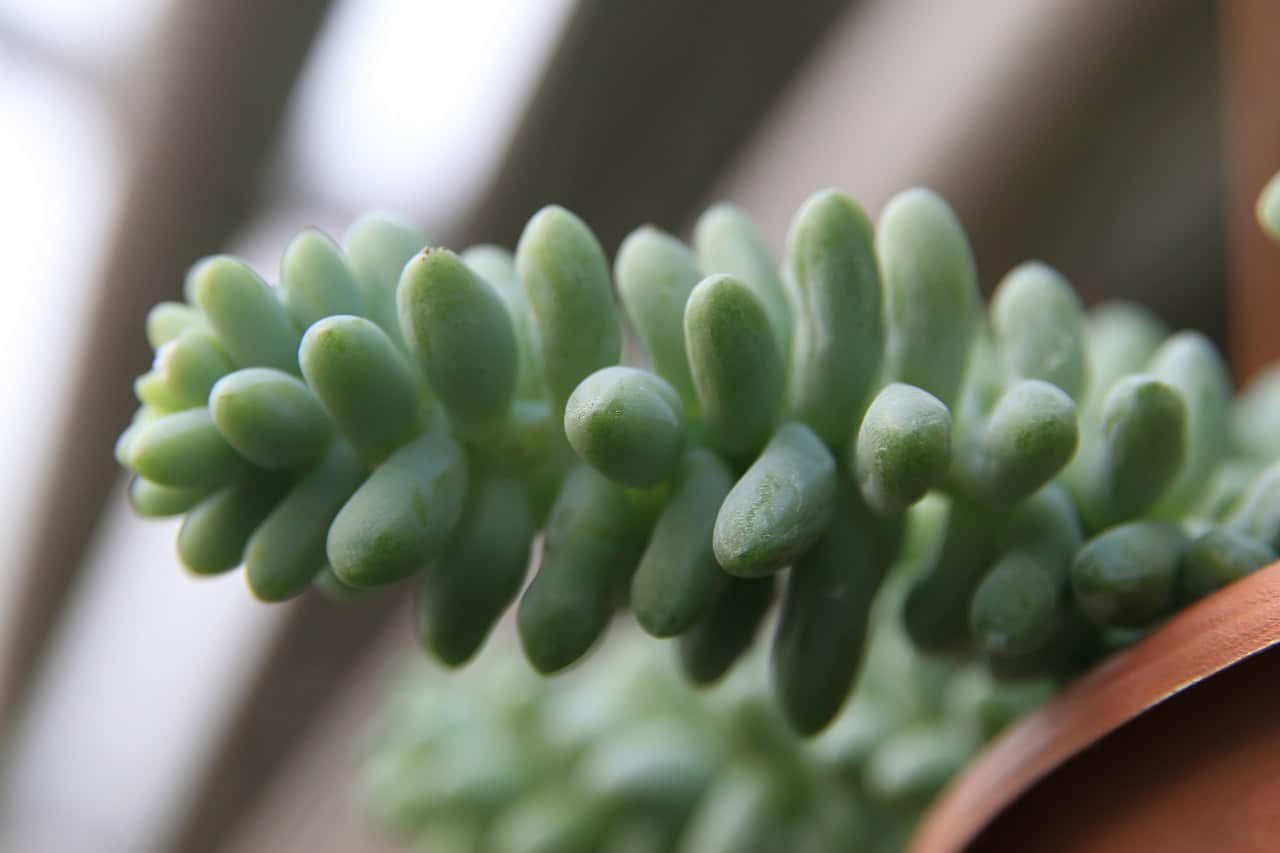
Image - Wikimedia / David J. Stang
Hanging succulents look great… anywhere! For example, on a balcony, hanging from the ceiling (inside the house), or on a narrow and high table. Many of them produce really decorative flowers, but even the ones that don't have very interesting ornamental value.
One of the innumerable advantages they have over other types of plants is that they require little water. Due to their origin and the evolution that they have had to date, they have learned to live in regions where temperatures are very high and where drought is a fairly common problem. So if you want to decorate your home with them, take a look at our selection.
What are succulents?
In this article you are going to see images of cacti and succulents, and that is something that may surprise you. But don't worry: it has its explanation. For that, you have to know what a succulent plant really is. I am not going to elaborate much on this, for now I am satisfied that you know that a succulent is that plant (whatever type it is) that finds so little water in its natural habitat that it has been forced to store as much water as it can in some part of its body when it rains, for example in its leaves in the case of succulents, or in the very interior of its body in the case of cacti.
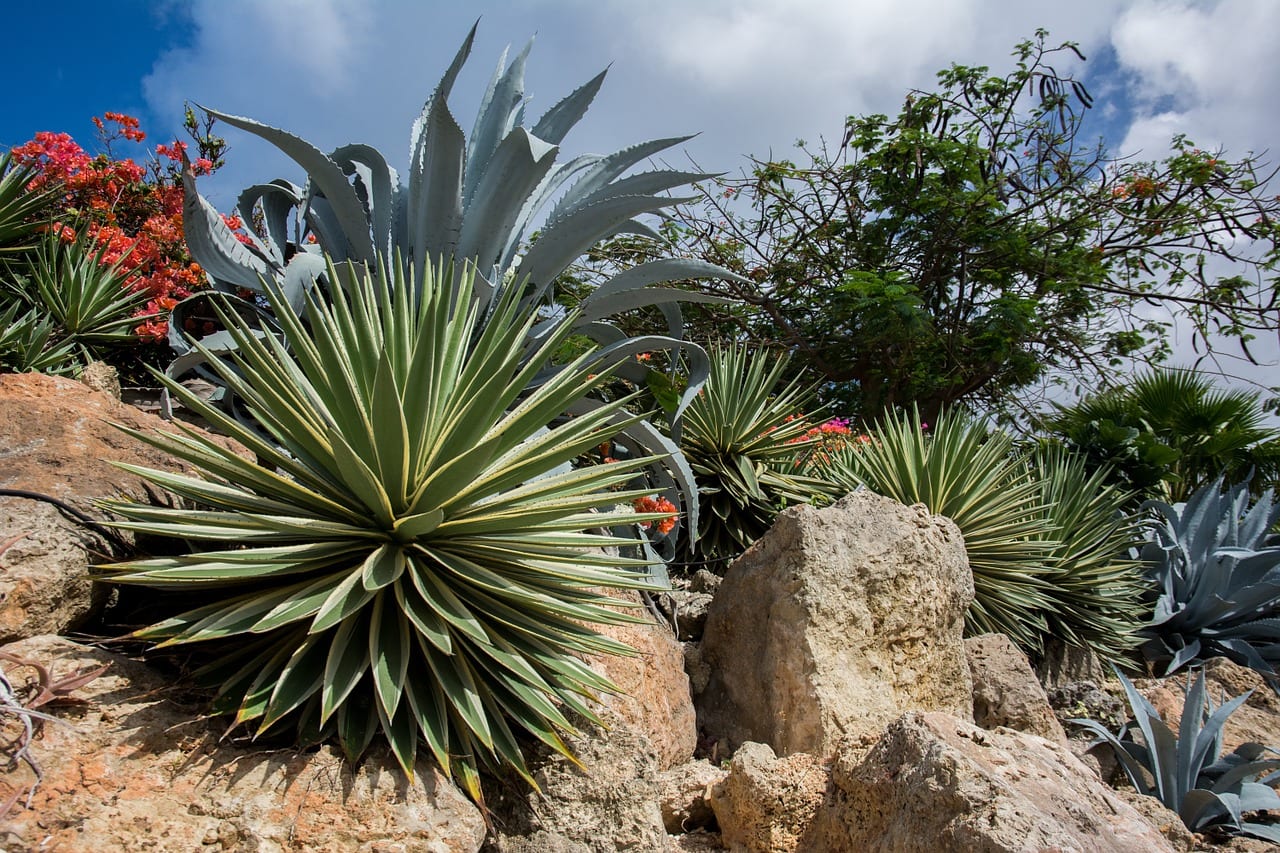
There are other plants that do the same, but especially commercially, they do not fall into the category of Succulents, such as baobab. This is a typical tree of the savannah, which has turned its trunk into a large store of water, which makes it very thick. In fact, it is said that it takes about 20 people to hug the trunk of an adult baobab. Incredible, don't you think?
Hanging succulent plant selection
Succulents are very interesting plants, especially if we refer to hanging ones. They beautify the home in an amazing way, and also do not require much care. But what are there?
In nature there are many species, but we are going to recommend the following for how easy they are to find in nurseries and garden stores:
Rat tail cactus (Disocactus flagelliformis)
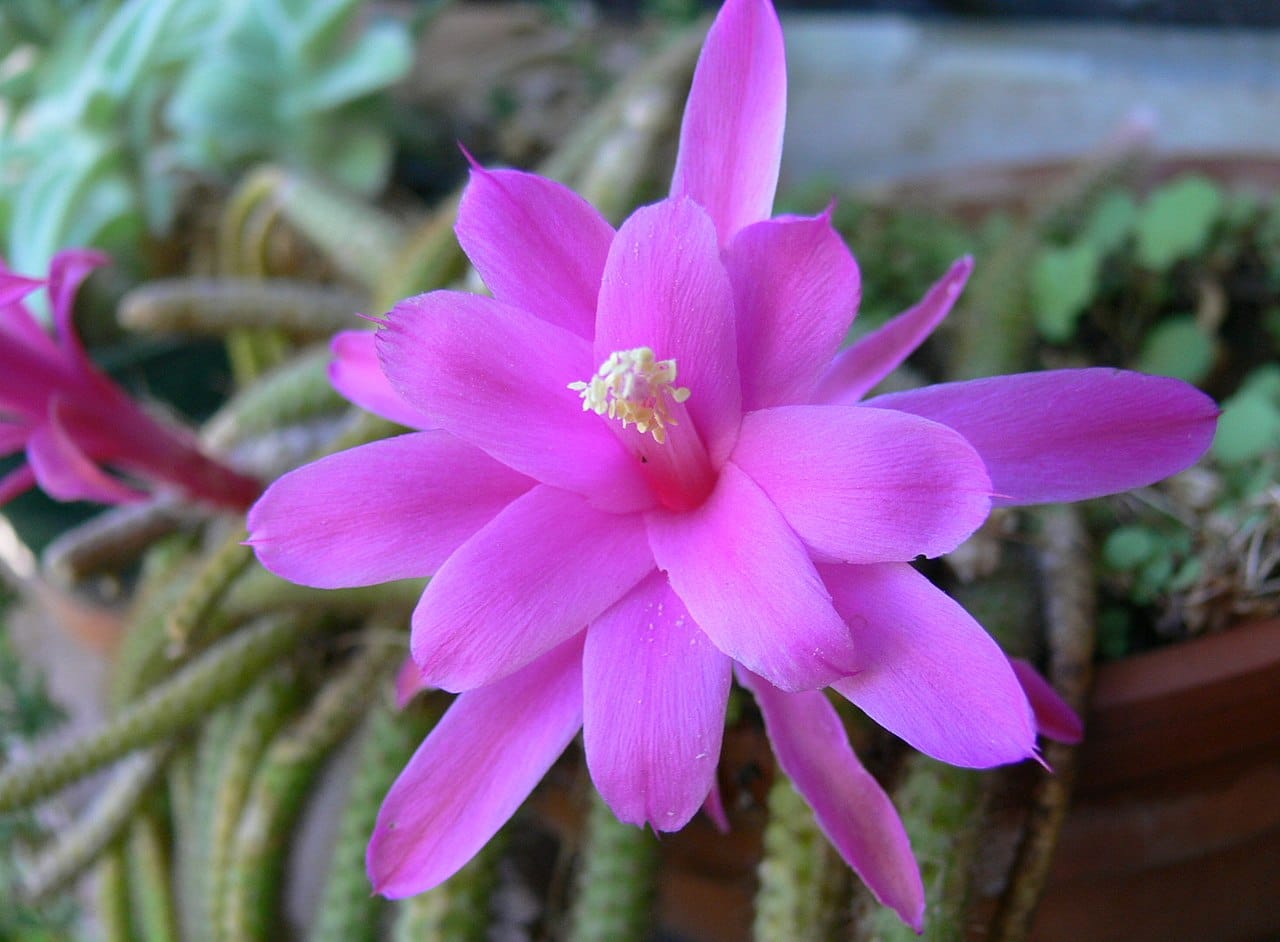
Image - Wikimedia / Jod-let
The rat-tail cactus is a cactus (worth the redundancy 🙂) native to Mexico that develops stems up to two centimeters in diameter and up to 2 meters long. In spring, numerous pink to reddish flowers sprout at the end of each stem.
Rosary plant (Senecio rowleyanus)
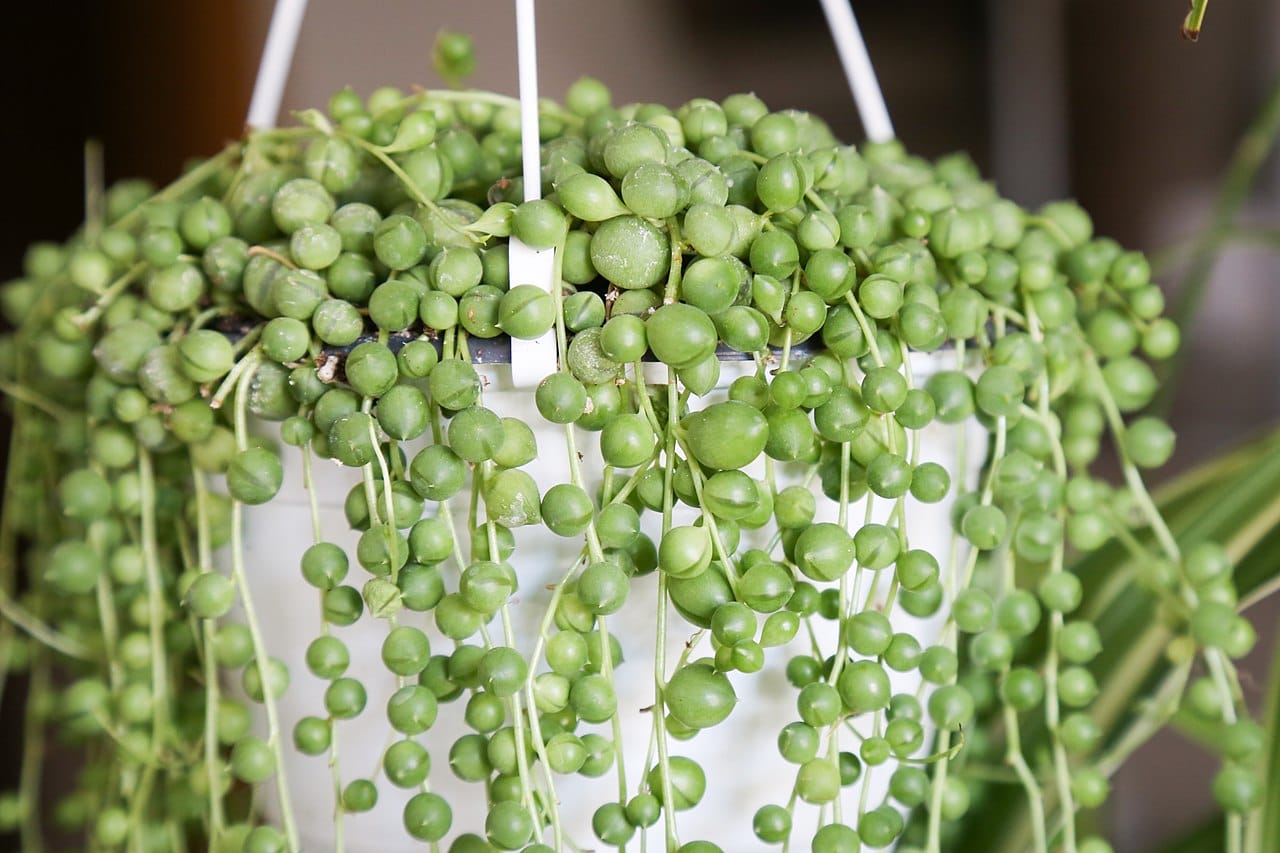
Image - Wikimedia / Maja Dumat from Deutschland (Germany)
La rosary plant, also known as hanging pellets, is a crass native to Southwest Africa that develops stems up to 1 meter with spherical leaves of 6 millimeters in diameter. In summer it produces very decorative white flowers of about 12 millimeters in diameter.
Monkey's tail (Cleistocactus colademononis)
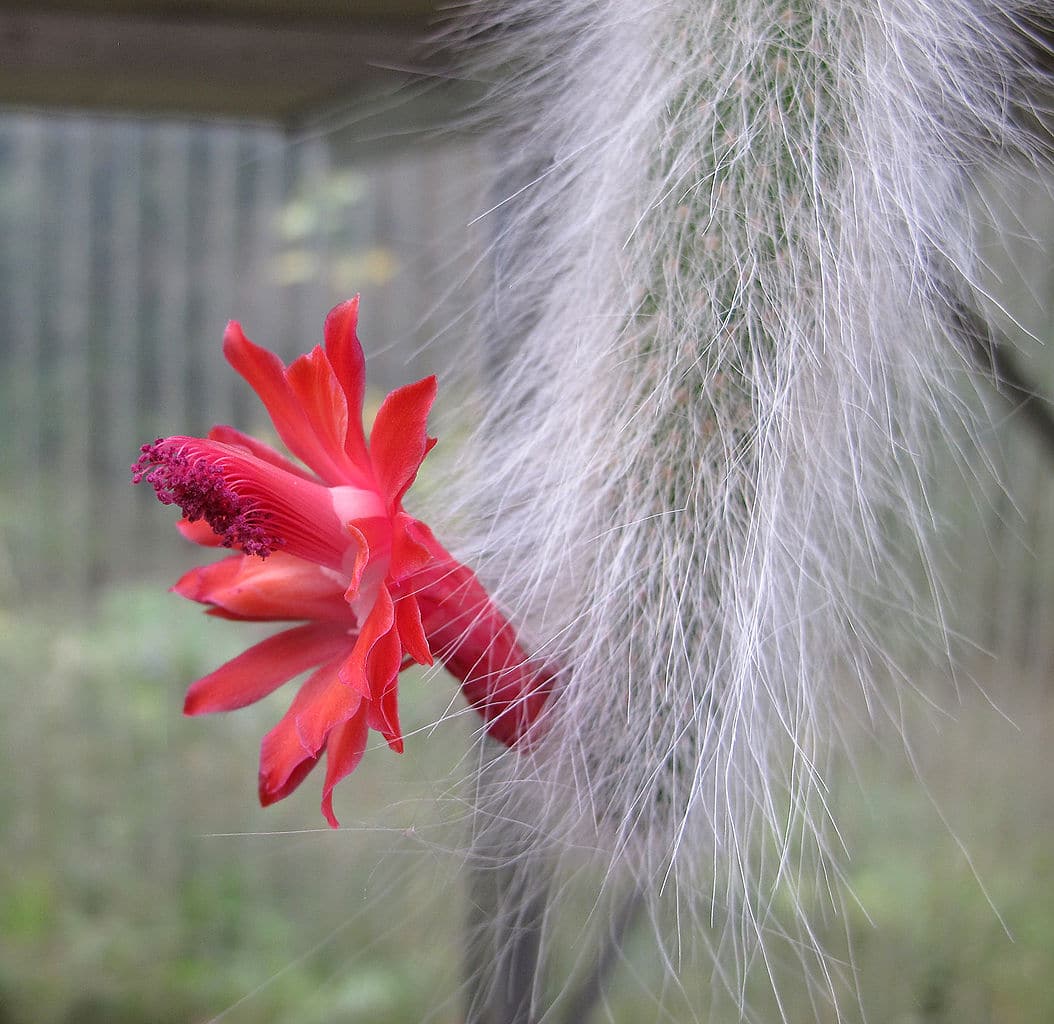
Image - Wikimedia / MMFE
The cactus that receives the curious name of monkey's tail It is endemic to Bolivia, where it lives at an altitude of more than 1000 meters. It develops hairy stems that are about 2-3 centimeters thick and up to 2 meters long., and produces red flowers.
Jade Necklace (Crassula marnieriana)

Image - Wikimedia / Salicyna
El jade necklace is a hanging succulent plant native to South Africa that develops stems 40 centimeters long. Its leaves are small, one centimeter, and flattened. It produces white flowers at the end of each stem, and they measure about 2 centimeters.
Orchid cactus (Epiphyllum oxypetalum)
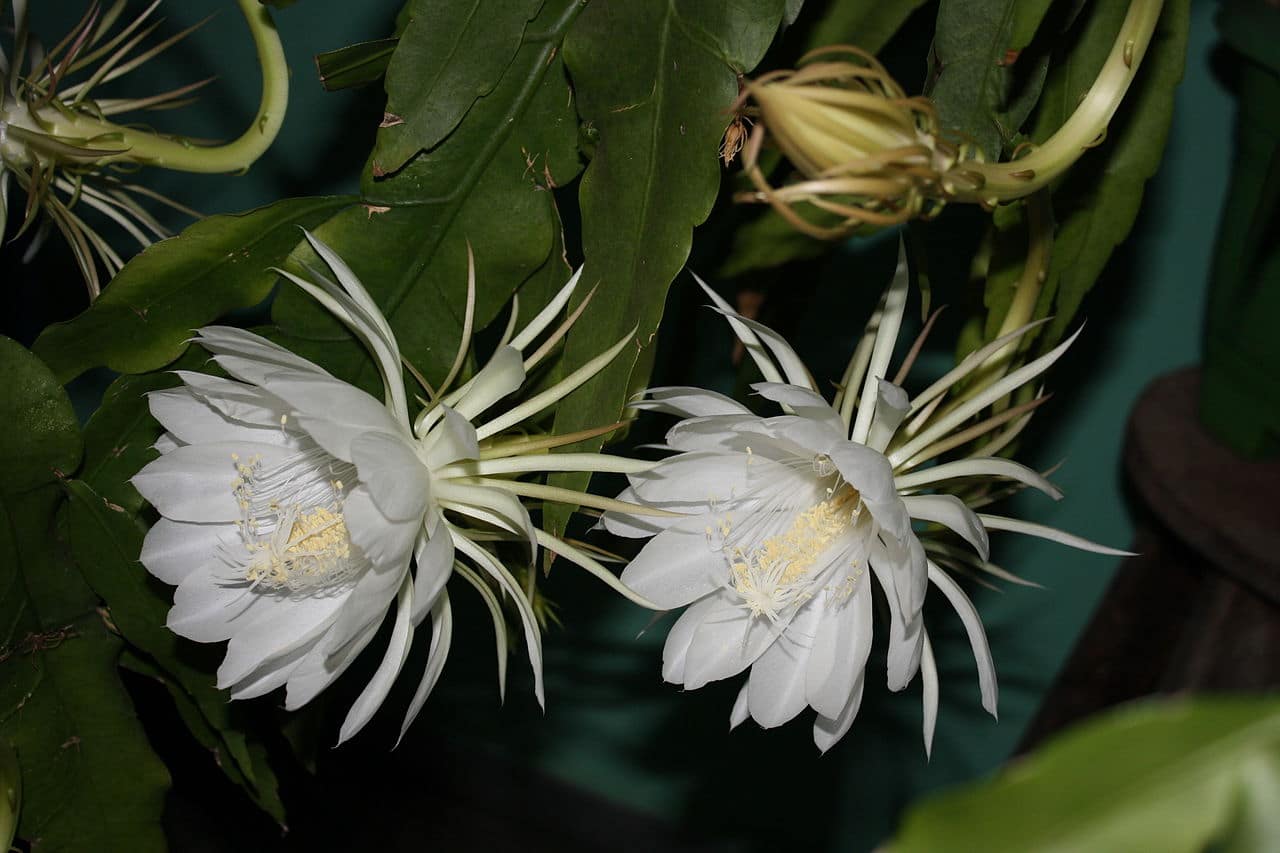
Image - Wikimedia / LEONARDO DASILVA
El orchid cactus is native from Mexico to Venezuela, which develops flattened stems 1 to 10 centimeters wide by 3 to 5 millimeters wide. The flowers are white, scented and are up to 25 centimeters wide. But you must be careful, since they only last one night.
Banana string (Senecio radicals)
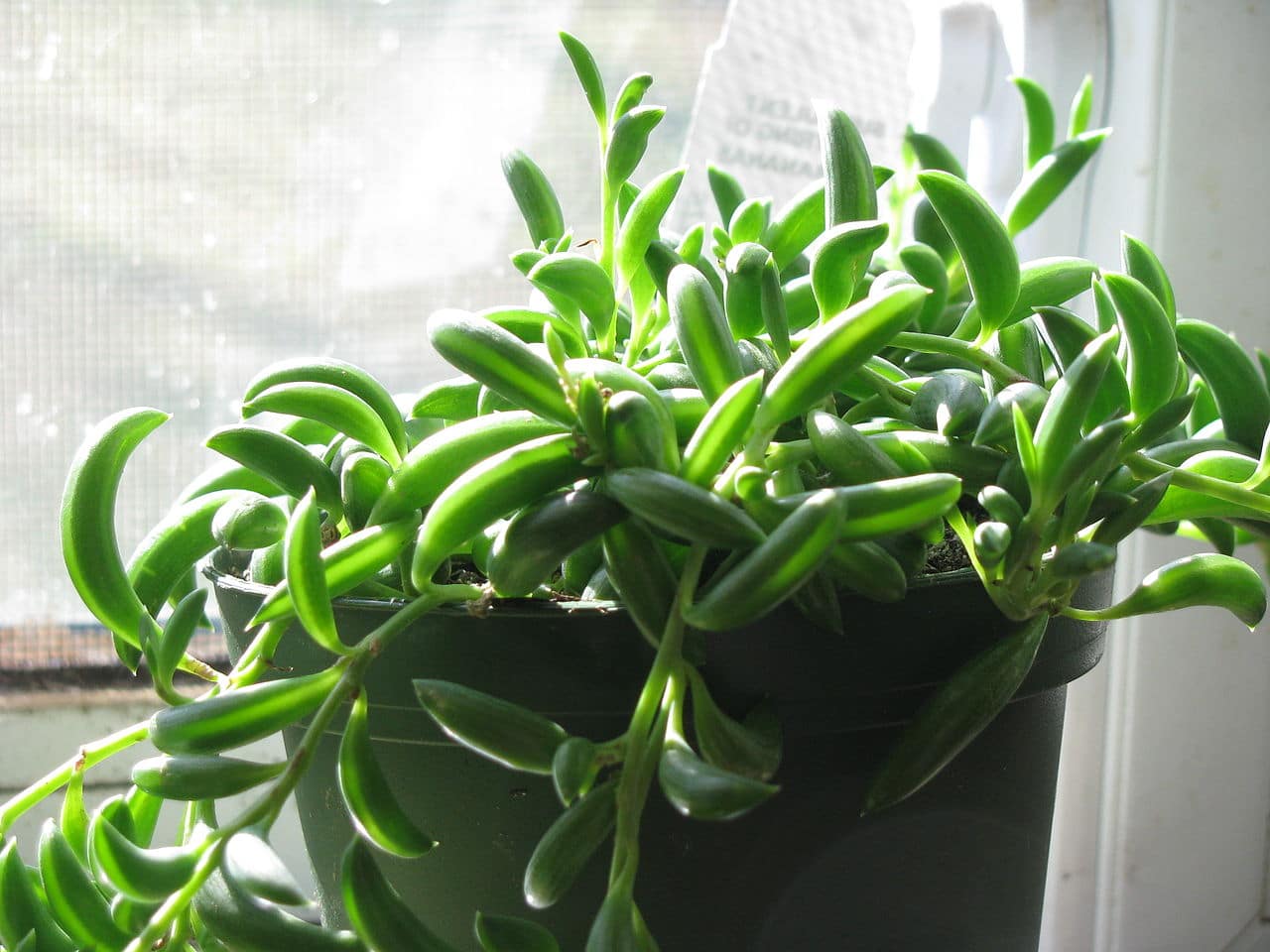
Image - Wikimedia / KaitM42
La bananas chain or chain of bananas is a crass native to Namibia, which develops leaves in the shape of miniature bananas, which sprout from stems up to 1 meter in length. The flowers are white, and they sprout in autumn-winter.
Pitahaya (Hylocereus undatus)
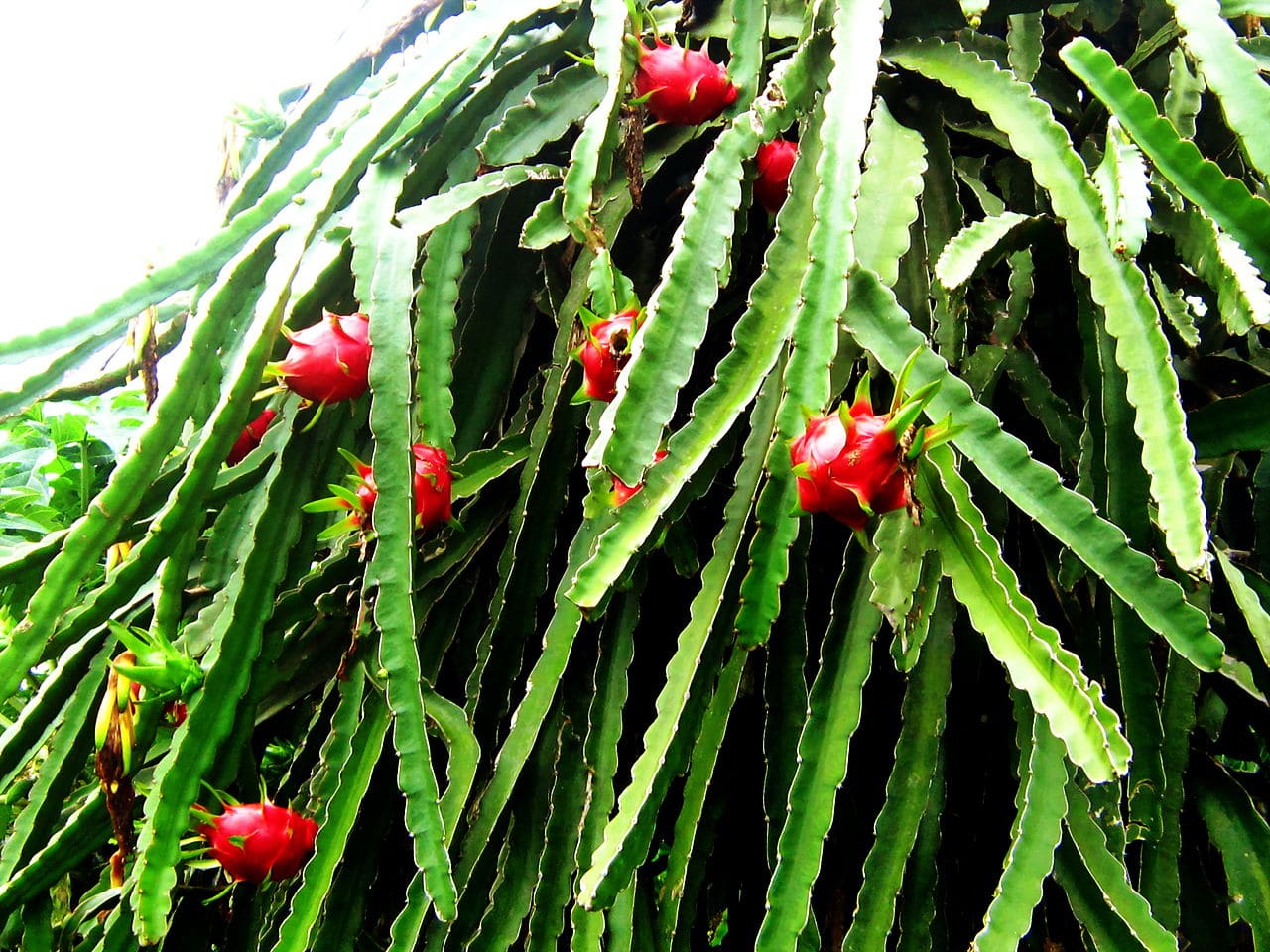
Image - Wikimedia / Bùi Thụy Đào Nguyên
El pitahaya It is one of the most important cacti on a commercial level. It is native to Central America, and develops segmented stems up to 1,20 meters. The total height of the plant can be up to 10 meters. Its flowers are large, 15 to 17 centimeters in diameter, white and very fragrant. The fruit is edible.
Red silk (Sedum rubrotinctum)
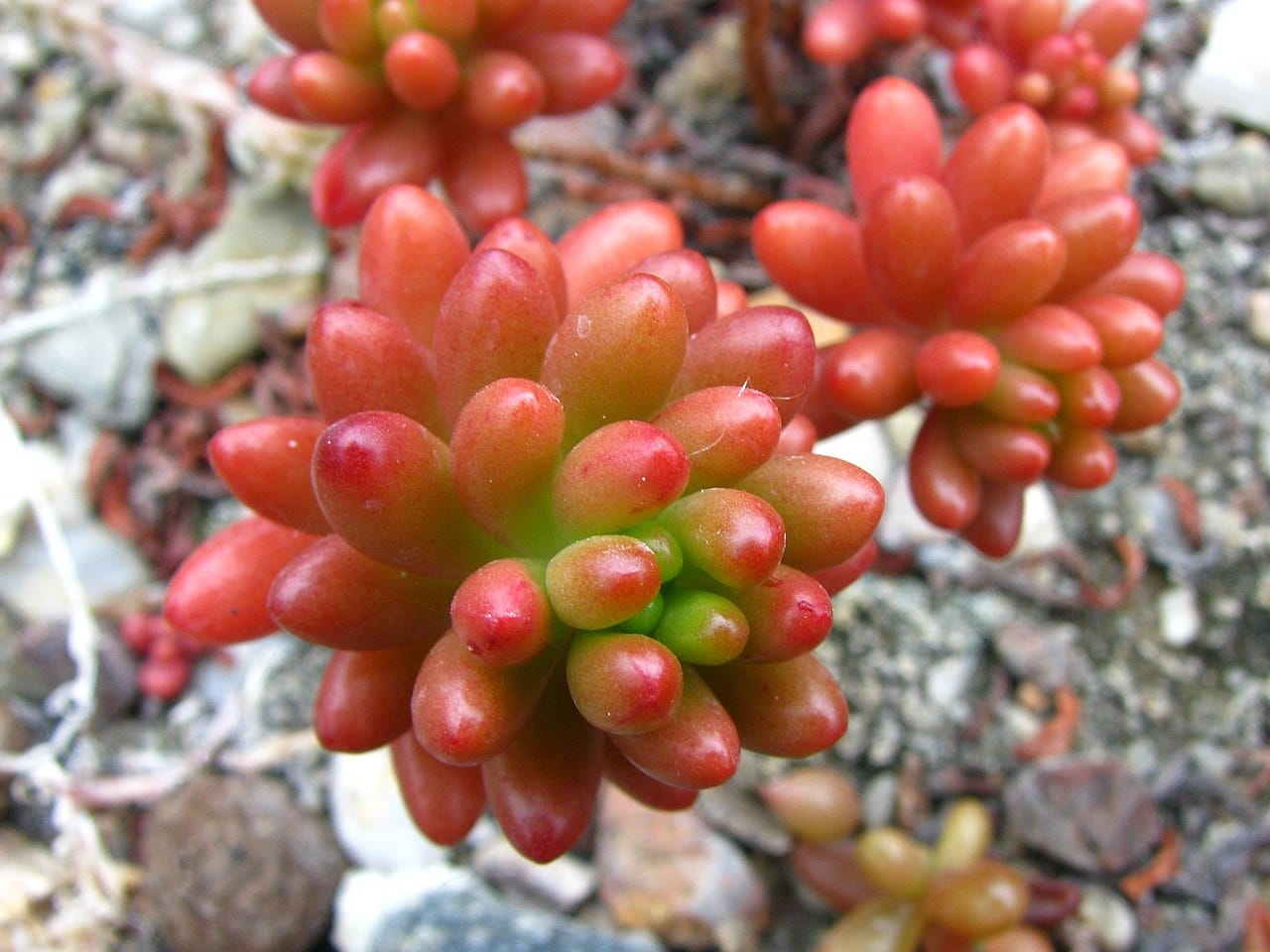
Image - Wikimedia / Agnieszka Kwiecień, Nova
El red silk It is a crass native to Mexico that develops stems up to 20 centimeters with elongated leaves. It is not exactly a hanging plant, but since it has a creeping habit it can be used as such. During spring it produces flowers of about 1 centimeter in diameter, and yellow in color.
Christmas Cactus (Schlumbergera truncata)
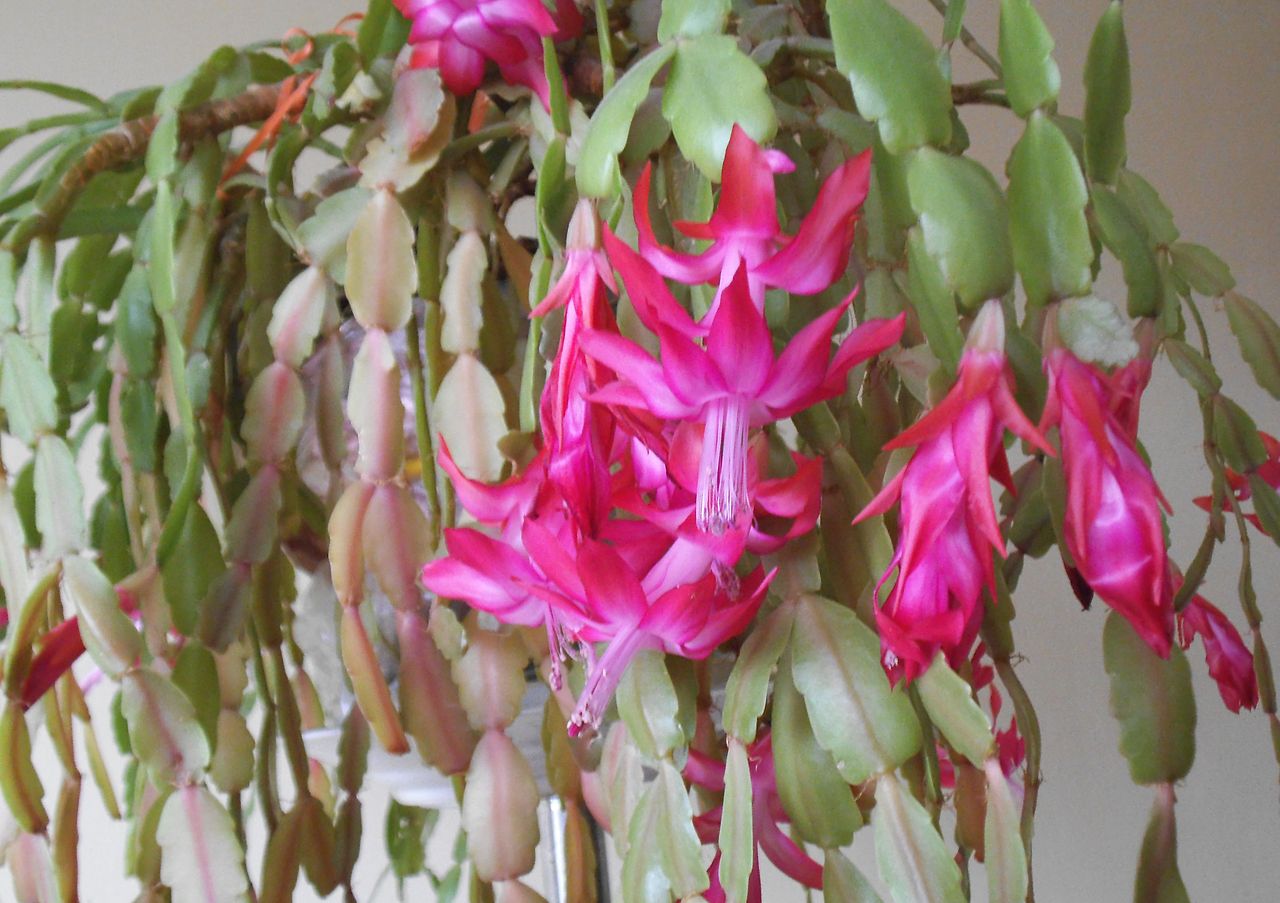
Image - Wikimedia / Gabriel VanHelsing
El christmas cactus is an endemic species of Brazil that develops flattened, hanging stems, up to 50-60 centimeters in length. It blooms in fall-winter, producing white, red, pink, or purple flowers.
What do you think of these hanging succulents? And which one did you like the most? 🙂